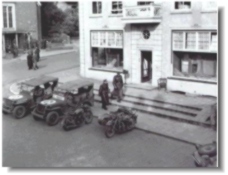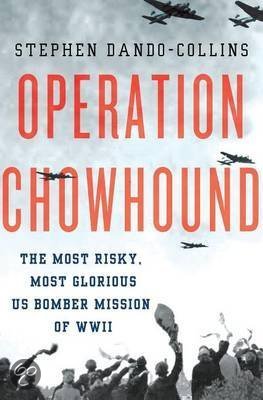Negotiating a truce
Air Commondore Geddes had gone to work immediately and had been busy throughout the week. When the preparations were completed he went to General Walter Bedell-Smith and showed him the plan. Geddes was then send to Achterveld, a small village in Holland, where a conference would take place on 28th April. Major General Sir Francis de Guingand, Montgomery's Chief of Staff would lead the conference. The German delegation was lead by Dr. Schwebel, Seyss-Inquart's second in command. De Guigand had expected that the Germans wouldn't have any objections to Geddes' plan and that they could get to work on working out the details. The Germans had other plans. They had only come to hear the Allied plans and were not authorized to discuss any plans with the Allied. So all De Guigand could do was to inform the Germans that Eisenhower had decided that the droppings would start the next day. De Guigand asked the Germans to meet again as soon as possible.
 The second meeting came indeed soon. Two days later on 30th April Achterveld was for the second time the scene of a conference. This time the conference was official. General Walter Bedell-Smith was there to represent Eisenhower. The Reichscommissaris Seyss-Iquart himself had come to the conference and with him a large delegation of Army, Naval and Airforce officers. Dutch civil servants in charge of the food distribution, among which the already mentioned ir. Louwes, were also present. Stalin had send General Suslapurov. After arrival the Germans where brought to a separate room to wait. The seven Dutch men where brought to another room to have lunch with the Allied officers.
The second meeting came indeed soon. Two days later on 30th April Achterveld was for the second time the scene of a conference. This time the conference was official. General Walter Bedell-Smith was there to represent Eisenhower. The Reichscommissaris Seyss-Iquart himself had come to the conference and with him a large delegation of Army, Naval and Airforce officers. Dutch civil servants in charge of the food distribution, among which the already mentioned ir. Louwes, were also present. Stalin had send General Suslapurov. After arrival the Germans where brought to a separate room to wait. The seven Dutch men where brought to another room to have lunch with the Allied officers.
In Achterveld both sides decide that the number of drop zones will be extended to ten from the 2nd of May. (Overview of the drop zones) The 'Nieuwe Waterweg', the waterway to Rotterdam, was going to be cleared from mines by the Germans. When that was done the ships with food would be able to reach Rotterdam.
Rhenen and its surrounding area were appointed as neutral area. The Allied were going to provide 200 trucks and the necessary petrol to bring food in on the Wageningen - Rhenen highway. The German surrender was still not accomplished and would not be accomplished as long as there were still German strongholds in the Heimat. The arrangement further includes that the English truckdrivers of the 49th Infantry Division would deliver the trucks with food in Rhenen where the trucks would change hands and Dutch truck drivers would take the trucks further into occupied Holland. The codename for this operation was Faust. Faust started on May 3rd.
Both sides would meet once more. On 2nd May they met again, this time in Wageningen to ratify the truce on which they had agreed. By that time the truce was typed out in English and German.
 Author: Hans Onderwater This book by Hans Onderwater is the standard work about the food drop missions over Occupied Holland with a bundle of information, photos and first hand accounts of the hunger winter and the food drop missions.
Author: Hans Onderwater This book by Hans Onderwater is the standard work about the food drop missions over Occupied Holland with a bundle of information, photos and first hand accounts of the hunger winter and the food drop missions.